
Pickup trucks have long transcended their utilitarian origins, evolving into potent symbols of identity, lifestyle, and even status for countless individuals. While some models effortlessly earn their place as cherished companions, becoming subjects of enthusiastic conversation and unwavering loyalty, others fall significantly short of expectations. These disappointing purchases often lead to quick trades, or worse, become vehicles owners are genuinely reluctant to admit they once owned.
The automotive market is a dynamic landscape where consumer expectations frequently clash with real-world performance. Whether due to inherent design flaws, persistent reliability issues, or simply an underwhelming driving experience, certain vehicles consistently inspire buyer’s remorse. Understanding these pitfalls is crucial for anyone navigating the complex choices involved in vehicle ownership, especially when considering the substantial financial commitment involved.
This in-depth analysis delves into a selection of utility vehicles that have garnered widespread dissatisfaction among their owners. Drawing on widely shared experiences and trends, we explore the specific reasons these models ended up on the “wish I’d never bought it” list, offering a clear, objective look at where they failed to deliver on their promises of performance, dependability, and long-term satisfaction.

1. **Nissan Titan (Especially from 2016–2023)**The Nissan Titan, upon its reintroduction, arrived with considerable anticipation and bold promises within the full-size pickup segment. However, the real-world experiences of many owners quickly revealed significant discrepancies between its initial fanfare and actual performance. While on paper it boasted a robust V8 engine and competitive towing figures, its transmission proved to be a consistent source of frustration. Owners frequently reported that the transmission “lacked the smoothness found in rivals,” leading to a driving experience often described as “jerky or hesitant under acceleration,” particularly noticeable in everyday scenarios and highway merging.
Beyond the transmission, fuel economy became another significant point of contention for Titan owners. Many felt the truck was excessively “thirsty for a truck that didn’t deliver exceptional performance or features,” especially when compared to its more efficient and refined competitors. This combination of a less-than-smooth powertrain and poor fuel efficiency positioned the Titan as a vehicle that was perpetually playing catch-up rather than innovating within its highly competitive class. These performance shortcomings contributed to a general sense of unease among buyers who expected a more polished and economical truck.
A critical factor exacerbating owner regret was the Nissan Titan’s significant issue with resale value. Unlike many established trucks that are known for strong value retention, the Titan “depreciated quickly,” often leaving owners with substantial financial losses when they attempted to sell or trade in their vehicles after only a few years. This considerable “financial hit left a lasting sting” and understandably discouraged many from recommending the model, even among Nissan loyalists who often expressed regret over their purchase decision. The truck’s reputation suffered considerably from this cycle of depreciation, creating a perception of it as a risky gamble that rarely paid off for its owners.
Ultimately, the lack of widespread enthusiasm for the Nissan Titan meant it seldom featured in conversations about reliable or desirable trucks. Owners frequently “preferred to avoid the subject or downplay their ownership experience,” a clear indicator of their dissatisfaction. Despite some potential redeeming qualities, these were largely overshadowed by persistent shortcomings in ride quality, interior comfort, and critically, value retention. The Titan’s journey serves as a poignant “cautionary tale about how difficult it is to break into the competitive full-size truck market without a truly exceptional product,” leaving many of its owners quietly wishing they had opted for an alternative.
Car Model Information: 2017 Nissan Titan Platinum Reserve
Name: Nissan Titan
Manufacturer: Nissan
Production: September 2003 – November 2024
ModelYears: 2004–2024
Assembly: Canton, Mississippi
Class: Pickup_truck#Full-size_pickup_truck
BodyStyle: 2-door pickup truck,4-door pickup truck
Layout: Front-engine, rear-wheel-drive layout
Platform: Nissan F-Alpha
Caption: 2021 Nissan Titan Crew Cab PRO-4X (Canada)
Categories: 2010s cars, 2020s cars, All-wheel-drive vehicles, All articles with unsourced statements, Articles with short description
Summary: The Nissan Titan is a full-size pickup truck which was manufactured by Nissan USA in Canton, Mississippi for the North American market from September 2003 to November 2024 over two generations. The first generation was produced for the 2004-2015 model years (MY), with an intermediate refresh for MY 2008. The second generation was made for MY 2016-2024, with production beginning in November 2015 and an intermediate refresh for MY 2020. Both generations have an extended cab or crew cab design, with the second-generation also having a two-door regular cab variant. The Titan has a V8 engine which is mounted in the front and either rear-wheel drive or four-wheel drive, with the second generation adding a diesel engine alongside a revised version of the gasoline engine used in the first generation.
Get more information about: Nissan Titan
Buying a high-performing used car >>>
Brand: Nissan Model: Titan
Price: $26,995 Mileage: 64,099 mi.
Read more about: A Money Pit in Every Drive: 14 Pickup Trucks and the Hidden Pitfalls Owners Regret Most

2. **Chevrolet Colorado (Especially from 2015–2018)**When the Chevrolet Colorado re-entered the midsize truck market, it initially generated significant excitement, largely due to its competitive pricing and the attractive option of a diesel engine. However, this initial optimism quickly gave way to widespread frustration as many owners began to encounter a litany of recurring problems. A primary concern centered on inconsistent build quality in early models. Common complaints included persistent “interior rattles, squeaks, and poorly fitting panels,” which severely undermined the perception of a well-built vehicle and chipped away at owner confidence. These issues suggested a fundamental lack of attention to detail during the manufacturing process, detracting from the overall ownership experience.
Adding to the frustration, the truck’s electronics emerged as another significant weak point. Owners reported a range of issues, from frequent “infotainment glitches” to “failing sensors and electrical gremlins” that disrupted the driving experience and sometimes compromised vehicle functionality. These electronic malfunctions, which should ideally be seamless in a modern vehicle, created constant nuisances that detracted from the truck’s intended role as a solid and reliable midsize offering. Such flaws meant that the Colorado, despite its promise, struggled to deliver a consistently dependable performance in its crucial early years.
The 8-speed automatic transmission, particularly prevalent in many Colorado models, became a widespread source of owner complaints. Drivers frequently highlighted issues such as “harsh shifting, delayed downshifts, and occasional hesitations,” making the driving experience far less smooth and refined than anticipated. While this transmission was ostensibly designed to enhance both fuel efficiency and performance, it often felt like a step backward in terms of overall drivability and refinement. Despite the manufacturer issuing “software updates and recalls,” these persistent problems often lingered for many owners, profoundly eroding their trust in the truck’s long-term reliability. Some drivers even expressed a preference for the simpler, more dependable transmissions offered by rival manufacturers.
Ultimately, the cumulative effect of these issues led many early Colorado owners to feel a sense of regret and embarrassment regarding their purchase, prompting a desire to transition to more dependable vehicles. The truck’s initial promising debut was significantly overshadowed by these real-world operational problems, which collectively inflicted considerable damage on its reputation. Owners of these specific model years often “avoid discussing” their experiences or relay them primarily as cautionary tales to others considering a purchase. Although Chevrolet did implement improvements in subsequent model years, the reputational damage had already been sustained for a significant segment of buyers, transforming what could have been a market leader into a source of considerable buyer’s remorse for many.
Read more about: A Money Pit in Every Drive: 14 Pickup Trucks and the Hidden Pitfalls Owners Regret Most

3. **Dodge Dakota (Especially from 2005–2011)**The Dodge Dakota, once a notable contender in the midsize truck segment, saw its later model years, specifically from 2005 to 2011, characterized by mounting owner dissatisfaction. During this period, the Dakota was plagued by a problematic combination of an aging design and an increasing number of mechanical issues. Buyers who initially sought a rugged and reliable work truck found themselves confronting disappointing fuel economy, a stark contrast to other midsize pickups that were simultaneously making strides in efficiency. This made the Dakota feel increasingly outmoded in a rapidly evolving market.
A significant criticism leveled against the Dakota during these years was the performance of its engines. Having not received substantial updates, these powerplants “felt underpowered and outdated.” This resulted in a truck that was notably sluggish in everyday driving conditions, a problem that became even more pronounced when the vehicle was loaded with cargo or engaged in towing. Owners frequently articulated their frustration over the insufficient power available, which severely limited the Dakota’s practical usefulness and capability for the tasks typically associated with a pickup truck. This lack of robust performance was a major contributor to owner regret.
Furthermore, the Dakota’s ride and handling characteristics drew considerable criticism. While the truck attempted to project an aggressive styling often seen in larger, more capable pickups, it consistently failed to deliver a matching driving experience. The suspension was frequently described as “stiff and bouncy,” which made long journeys particularly uncomfortable for both drivers and passengers. Compounding this, the handling was perceived as “vague and unresponsive,” a trait that negatively impacted driver confidence, especially when attempting emergency maneuvers or navigating challenging road conditions. For owners expecting a harmonious blend of utility and comfort, the Dakota proved to be a profound disappointment.
These pervasive issues collectively contributed to the Dodge Dakota’s gradual fade into obscurity, solidifying its status as a model many owners would prefer to forget. Even among dedicated Dodge enthusiasts, these specific later model years are rarely spoken of with fondness, underscoring the depth of disappointment. The truck’s reputation declined to such an extent that Dodge notably “chose not to revive the Dakota name for many years,” a clear signal of how severely these persistent problems had impacted brand perception. For those who invested in a Dakota during this era, it often represents a regrettable chapter they would rather close quietly, rather than recall with pride.
Car Model Information: 2000 Dodge Dakota Base
Name: Dodge Dakota
Manufacturer: Unbulleted list
Production: 1986–2011
ModelYears: 1987–2011
Assembly: Unbulleted list
Class: Mid-size pickup truck
Layout: Unbulleted list
Predecessor: Dodge Ram 50
Categories: 1990s cars, 2000s cars, 2010s cars, All-wheel-drive vehicles, All articles with unsourced statements
Summary: The Dodge Dakota, marketed as the Ram Dakota for the final two years of production, is a mid-size pickup truck manufactured by Chrysler and marketed by its Dodge Truck division (model years 1987–2009) and later its Ram Truck division (2010–2011) — across three generations.
The Dakota was larger than the compact pickups from Ford and Chevrolet, the Ford Ranger and Chevrolet S-10, and was smaller than full-sized pickups such as Dodge’s own Ram. It used body-on-frame construction and a leaf spring/live axle rear end and was the first mid-size pickup with an optional V8 engine. For its entire production, the Dakota was manufactured at Chrysler’s Warren Truck Assembly in Michigan.
The Dakota was nominated for the North American Truck of the Year award for 2000.
Get more information about: Dodge Dakota
Buying a high-performing used car >>>
Brand: Dodge Model: Dakota
Price: $9,990 Mileage: 193,370 mi.
Read more about: A Money Pit in Every Drive: 14 Pickup Trucks and the Hidden Pitfalls Owners Regret Most

4. **Ford Ranger (Especially from 2001–2011)**The Ford Ranger, a compact pickup truck, held a long-standing position in the North American market, appreciated for its manageable size and practical utility. However, the models produced between 2001 and 2011, prior to its discontinuation in the region, became a significant source of owner dissatisfaction. During this decade, the Ranger was widely perceived as “aging and lacking modern updates” at a time when its competitors were rapidly advancing in design, technology, and performance. This stagnation meant that buyers expecting a small truck capable of combining practical utility with a degree of comfort found the Ranger’s interior to be notably “cramped and outdated.”
The cabin materials further contributed to the sense of disappointment, frequently being described as “cheap,” while the overall design felt “stale,” especially when juxtaposed against more contemporary rivals such as the Toyota Tacoma. For a substantial number of owners, the Ranger progressively began to feel like “a relic that hadn’t kept up with the times,” struggling to meet the evolving expectations for comfort and sophistication in a modern vehicle. This outdated interior experience undermined the truck’s appeal as a daily driver or a comfortable family vehicle.
Performance was another critical area where these Ranger models fell short. The truck’s engines often “struggled to deliver sufficient power,” particularly when tasked with towing or hauling heavier loads, which are fundamental functions of a pickup. Acceleration was frequently characterized as sluggish, and owners consistently complained that the truck simply “lacked the muscle needed for demanding work or highway merging,” making it feel underpowered in crucial driving situations. Furthermore, while its smaller size offered advantages in urban environments, it also inherently “limited payload and towing capacities,” frustrating those who genuinely required a versatile vehicle for both work and recreational activities. Many owners were left with the distinct impression that the Ranger represented a compromise, rather than a truly capable and dependable partner for their diverse needs.
Reliability during this period presented a mixed, but often problematic, picture. While some owners reported years of trouble-free use, a significant number encountered common and recurring issues such as “transmission problems, overheating, and electrical gremlins.” These persistent faults often led to “costly repairs and downtime,” an unacceptable burden for many given the truck’s price and its reputation. As these Ranger models aged, owners also found that “parts became harder to find, and dealerships provided less support,” further compounding their frustrations. This diminishing support network made the process of owning and maintaining the Ranger increasingly difficult, particularly as it approached the end of its production run, solidifying its place as a regrettable purchase for many.
Car Model Information: 2024 Ford Ranger XLT
Categories: All set index articles, Articles with short description, Cars introduced in 1982, Commons category link from Wikidata, Ford vehicles
Summary: The Ford Ranger is a compact or mid-size pickup marketed globally by Ford over a series of generations, varying between both in-house or outside development and manufacturing — and with a hiatus in North America from 2011–2018.
Debuting as a compact pickup in North America in 1982 for the 1983 model year, the Ranger was later introduced in some South American countries. From 1998 to 2011, the Ranger nameplate was used for models developed by Mazda for sale outside the North American market. In 2011, Ford introduced the first Ranger based on the T6 platform. Considered a mid-size pickup truck, the model was developed in-house by Ford Australia. In that same year, the North American-market Ranger was discontinued, leaving the T6 platform-based Ranger as the sole Ranger model worldwide.
For the 2019 model year, the Ranger was reintroduced in North America using the globally-marketed T6 model. It is manufactured at the Michigan Assembly Plant at Wayne, Michigan. The Ranger is smaller than the F-150 and larger than the Maverick in the Ford North American pickup truck range, while for markets outside the Americas it is typically the only Ford pickup offered for sale.
The second generation of the T6-based Ranger was released in 2021 for worldwide markets, using a revised T6 platform.
Get more information about: Ford Ranger
Buying a high-performing used car >>>
Brand: Ford Model: Ranger
Price: $37,378 Mileage: 3,072 mi.
Read more about: A Money Pit in Every Drive: 14 Pickup Trucks and the Hidden Pitfalls Owners Regret Most
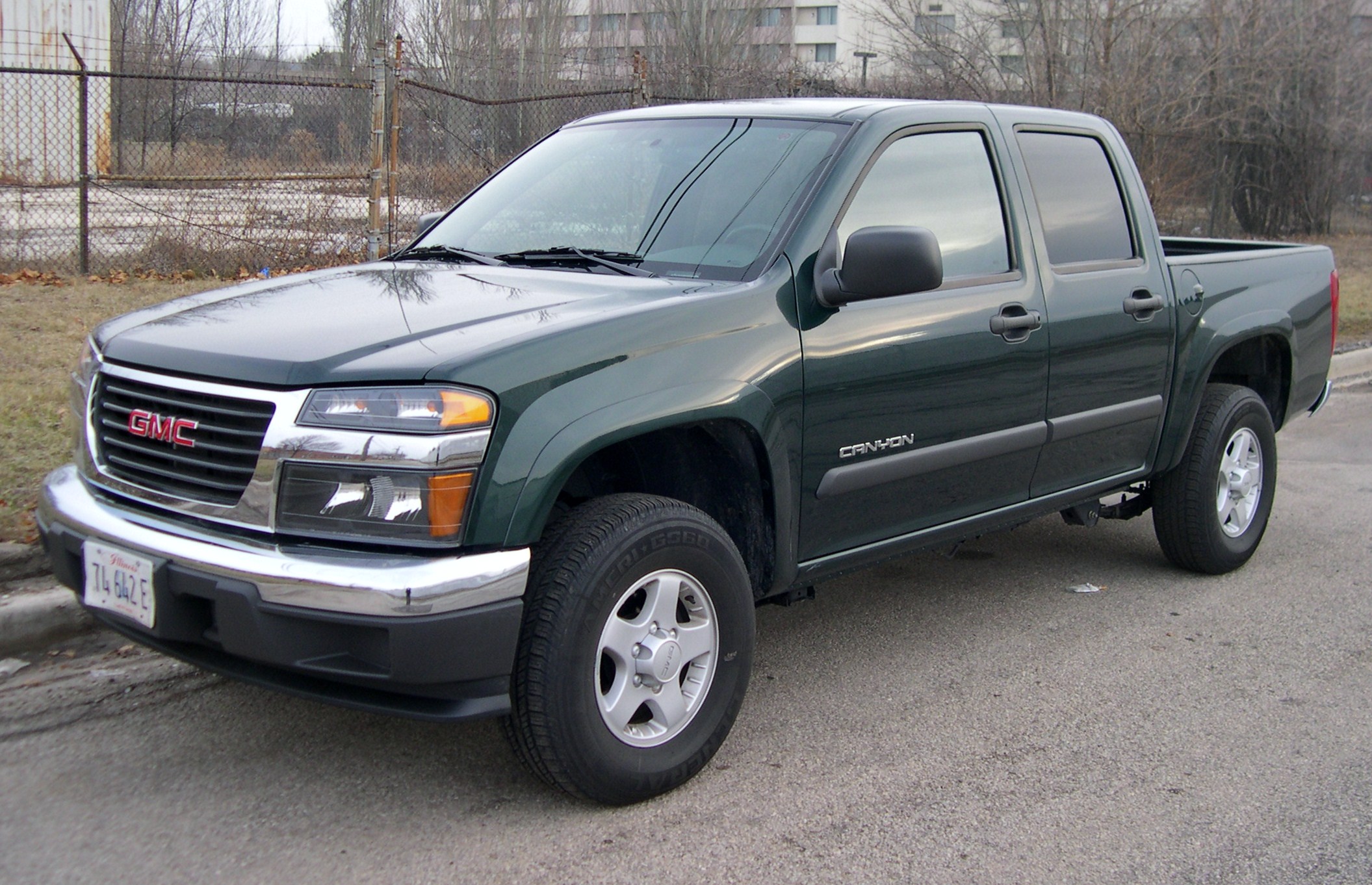
5. **GMC Canyon (Especially from 2004–2012)**The early models of the GMC Canyon, closely aligned in design and engineering with the Chevrolet Colorado, unfortunately inherited many of the same problems that led to considerable owner regret. From 2004 to 2012, the Canyon struggled significantly with persistent “inconsistent build quality and mechanical problems,” which collectively tarnished its reputation as a dependable midsize pickup. Owners frequently reported that crucial “suspension components wore out prematurely,” resulting in rough and uncomfortable rides, and, more significantly, necessitating expensive repairs that buyers had not anticipated. These issues were a fundamental breach of trust in the vehicle’s longevity and durability.
Electrical problems were another pervasive and frustrating aspect of early Canyon ownership. Reports of “faulty sensors and intermittent failures” were common, frequently disrupting the driving experience and causing unexpected inconveniences. These electrical glitches contributed to a general feeling that the Canyon was less solid and dependable compared to its competitors in the midsize truck segment, directly fostering widespread buyer remorse. The accumulation of these mechanical and electrical shortcomings painted a picture of a vehicle that struggled with fundamental reliability, which is a core expectation for any utility vehicle.
Stepping inside the cabin, the early GMC Canyon left much to be desired in terms of design and material quality. The interior was widely criticized for being “basic and uninspired,” featuring “low-quality materials that showed wear quickly.” This lack of refinement meant that the cabin often deteriorated rapidly with daily use, failing to provide a durable or pleasant environment. Owners also frequently pointed out “uncomfortable seats and a lack of sound insulation,” which made highway driving particularly tiring due to excessive road noise and vibrations. Furthermore, the infotainment system was largely “outdated for its time,” conspicuously lacking features that had become standard in rival models, further isolating the Canyon in a competitive market.
Performance-wise, the Canyon’s engine options, while functional, were largely “adequate but uninspiring.” Acceleration was commonly characterized as sluggish, and the truck’s towing capacity was notably “limited compared to other midsize trucks in its class.” Owners who had anticipated a robust and capable vehicle for either work or recreational activities often felt profoundly let down by its modest power delivery and less-than-stellar handling dynamics. The Canyon ultimately failed to offer any standout features or exceptional capabilities that would justify its purchase over more reliable or refined alternatives. This contributed significantly to a prevailing perception that it was a “safe” but ultimately forgettable choice, leaving many owners with a sense of disappointment rather than pride.
Continuing our exploration of vehicles that have left owners wishing for a different purchase, this section delves into five additional utility vehicles. These models, spanning various segments, have consistently disappointed their owners due primarily to specific powertrain problems, persistent build quality concerns, and issues that ultimately erode long-term satisfaction. Understanding these recurring pitfalls is essential for prospective buyers seeking to avoid similar experiences and make more informed decisions.
Read more about: A Money Pit in Every Drive: 14 Pickup Trucks and the Hidden Pitfalls Owners Regret Most
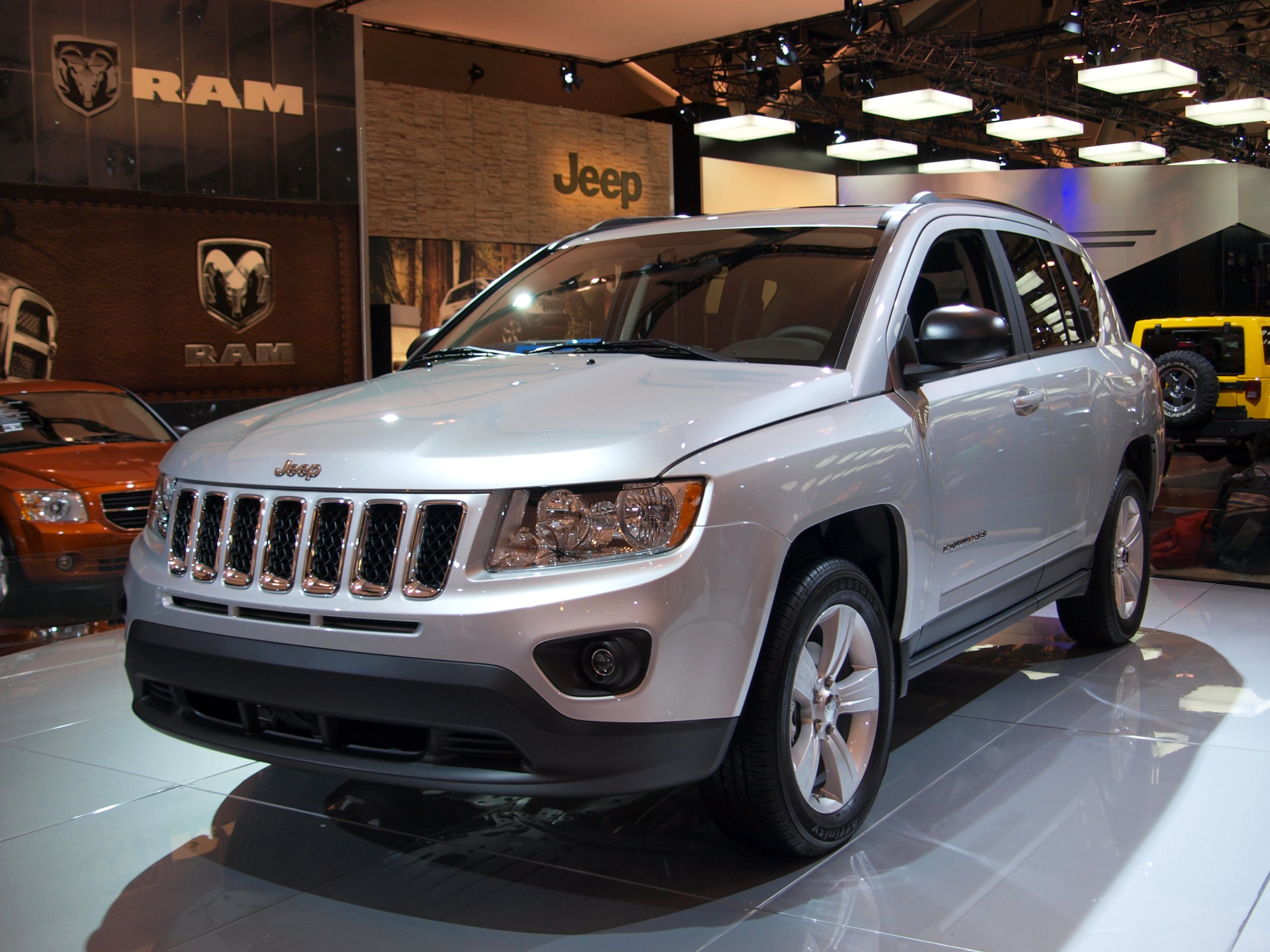
6. **Jeep Compass**The Jeep Compass, a compact SUV, has been a consistent source of frustration across several of its model years, frequently leading to what owners describe as a “migraine headache on wheels.” Its problematic nature often stems from a combination of mechanical and electrical faults that significantly detract from the ownership experience. For those seeking reliability and a smooth driving experience, the Compass frequently falls short of expectations, proving to be a challenge rather than a capable companion.
A primary point of contention for many Compass owners revolves around its transmissions. Both the continuously variable transmission (CVT) and the 9-speed automatic transmissions have been widely criticized for experiencing “herky-jerky shifting and catastrophic failure.” This unreliable performance not only makes for an uncomfortable driving experience but also raises serious concerns about long-term durability and the potential for expensive, unexpected repairs that can quickly diminish a vehicle’s value.
Beyond transmission woes, the Jeep Compass has been plagued by broader powertrain and system issues. Owners report “poor engine performance,” which translates to a less responsive and often underpowered driving experience, especially when compared to rivals in its class. Compounding this, “excessive oil consumption” has been a recurring and costly problem for many, requiring frequent monitoring and refills. Furthermore, persistent “electrical system issues” contribute to an overall sense of unreliability, affecting everything from dashboard warnings to critical component functionality.
These combined mechanical and electrical shortcomings illustrate why the Jeep Compass has frequently appeared on lists of vehicles that owners regret purchasing. The ongoing need for repairs, coupled with a driving experience that often fails to meet modern standards, makes it a model from which many experienced drivers would advise prospective buyers to steer clear, underscoring the importance of thorough research before commitment.
Car Model Information: 2020 Jeep Cherokee Latitude Plus
Name: Jeep Compass
Caption: 2019 Jeep Compass
Manufacturer: Jeep
Production: 2006–present
ModelYears: 2007–present
Class: Compact crossover SUV
BodyStyle: SUV
Layout: Front-engine, front-wheel-drive layout
Chassis: Unibody
Categories: 2010s cars, 2020s cars, All-wheel-drive vehicles, All Wikipedia articles written in American English, Articles with short description
Summary: The Jeep Compass is a compact crossover SUV, introduced in 2006 for the 2007 model year. The first generation Compass and Patriot, its rebadged variant, were among Jeep’s first crossover SUVs. The second-generation Compass debuted in September 2016 in Brazil and at the Los Angeles International Auto Show in November 2016, sharing a modified platform with the Renegade. It is positioned between the smaller Renegade and the larger Cherokee globally or the Commander in South America. The third-generation Compass debuted in May 2025, built on the STLA Medium by Stellantis, shared with other PSA Groupe vehicles.
Get more information about: Jeep Compass
Buying a high-performing used car >>>
Brand: Jeep Model: Compass
Price: $14,980 Mileage: 96,780 mi.
Read more about: Buyer’s Remorse in Every Mile: 11 Cars Drivers Say They’d “Unbuy” If They Could
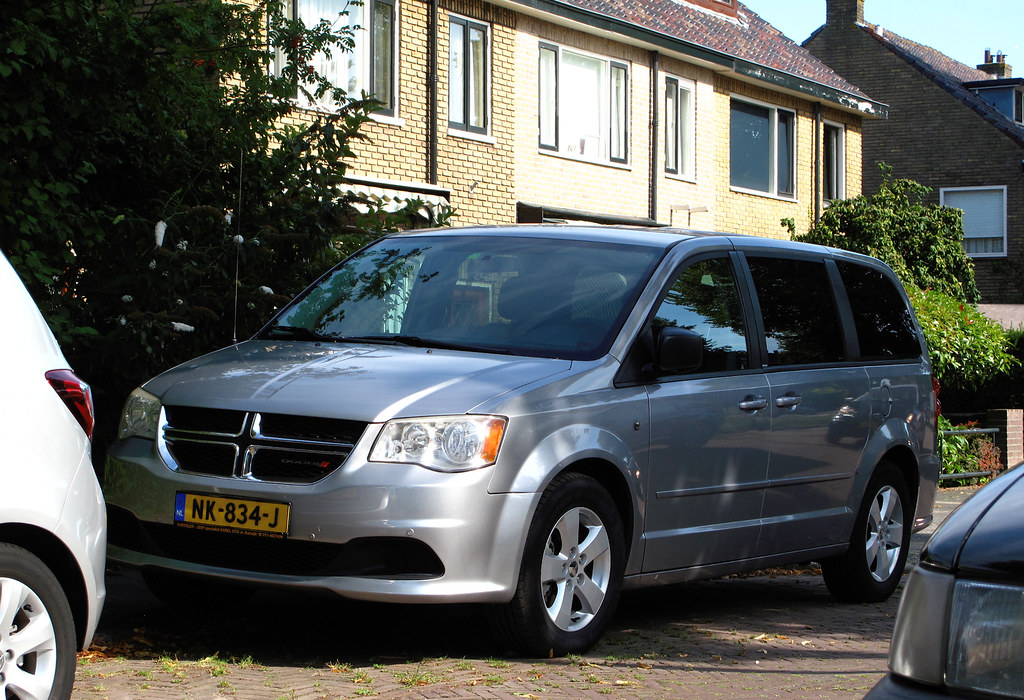
7. **Dodge Grand Caravan**While the Dodge Grand Caravan holds a nostalgic place for many families who created travel memories within its spacious confines, the reality of owning one often proved less than smooth. This minivan, despite its utilitarian appeal for hauling family, pets, and cargo, frequently became a source of significant owner regret, primarily due to persistent and debilitating transmission problems that undermined its reliability as a family vehicle.
Transmission failure stands out as a common and particularly impactful complaint from Grand Caravan owners. Before these critical components entirely give out, they often exhibit a series of concerning symptoms. Drivers frequently report issues such as “delayed gear engagement, rough shifting, and slipping,” which not only compromise driving comfort but also pose potential safety risks. These signs indicate fundamental weaknesses in the powertrain, leading to a loss of confidence in the vehicle’s ability to perform dependably.
Adding to the transmission challenges, the Dodge Grand Caravan also faced widespread reports of “electrical system problems.” These glitches could manifest in various ways, from minor nuisances to significant malfunctions that affected critical vehicle operations. Alongside this, “heavy oil consumption” was another recurring issue, requiring owners to diligently monitor and top off their oil levels, adding an unexpected layer of maintenance and cost to ownership that many were unprepared for.
The accumulation of these significant mechanical and electrical issues ultimately led many owners to deep regret. The sentiment among those who experienced these problems is clear: if given the opportunity to “rewind time and have a do-over,” they “would gladly choose something else.” This reflects the profound dissatisfaction caused by a vehicle that promised utility but often delivered extensive headaches and expenses.
Car Model Information: 2020 Jeep Wrangler Sport
Caption: 2011 Dodge Grand Caravan Mainstreet
Name: Dodge Grand Caravan
Manufacturer: Chrysler Corporation,Daimler AG,Chrysler LLC,Chrysler Group LLC,FCA US LLC
Class: Minivan
Layout: FF layout,F4 layout
Production: November 2, 1983 –August 21, 2020
ModelYears: 1984–2020
Related: Plymouth Voyager,Chrysler Town & Country (minivan),Dodge Mini Ram,Chrysler Voyager,Volkswagen Routan
Assembly: Windsor, Ontario,Fenton, Missouri,Fenton, Missouri,Fuzhou
Successor: Dodge Journey,Chrysler Voyager
Categories: All-wheel-drive vehicles, All articles with unsourced statements, Articles with short description, Articles with unsourced statements from December 2017, Articles with unsourced statements from May 2009
Summary: The Dodge Caravan is a series of minivans manufactured by Chrysler from the 1984 through 2020 model years. The Dodge version of the Chrysler minivans, was marketed as both a passenger van and a cargo van (the only version of the model line offered in the latter configuration). For 1987, the model line was joined by the long-wheelbase Dodge Grand Caravan. Produced in five generations across 36 model years, the Dodge Caravan is the second longest-lived Dodge nameplate (exceeded only by the Dodge Charger). Initially marketed as the Dodge counterpart of the Plymouth Voyager, the Caravan was later slotted between the Voyager and the Chrysler Town & Country. Following the demise of Plymouth, the model line became the lowest-price Chrysler minivan, ultimately slotted below the Chrysler Pacifica.
Sold primarily in the United States and Canada, the Dodge Caravan was also marketed in Europe and other international markets under the Chrysler brand (as the Chrysler Voyager or Chrysler Caravan). From 2008 onward, Dodge marketed the model line only as the Grand Caravan; Ram Trucks sold a cargo-only version of the model line as the Ram C/V Tradesman. The model line was also rebranded as the Volkswagen Routan from 2009 through 2014.
After the 2020 model year, the Dodge Grand Caravan was discontinued, ending production on August 21, 2020. For 2021 production, the Grand Caravan nameplate was moved to Chrysler, which used it for a Canadian-market version of the Chrysler Pacifica (in the United States, the exact vehicle was marketed as the Chrysler Voyager).
For its entire production run, the Dodge Caravan/Grand Caravan was manufactured by Chrysler Canada (now Stellantis Canada) at its Windsor Assembly facility (Windsor, Ontario). From 1987 until 2007, the model line was also manufactured by Chrysler at its Saint Louis Assembly facility (Fenton, Missouri). Since their introduction in late 1983, over 14.6 million Chrysler minivans have been sold worldwide (including export versions and versions sold through rebranding).
Get more information about: Dodge Caravan
Buying a high-performing used car >>>
Brand: Dodge Model: Grand Caravan
Price: $25,000 Mileage: 54,707 mi.
Read more about: Rust Resistance Rundown: Identifying the Vehicles That Conquer and Crumble in the American Salt Belt
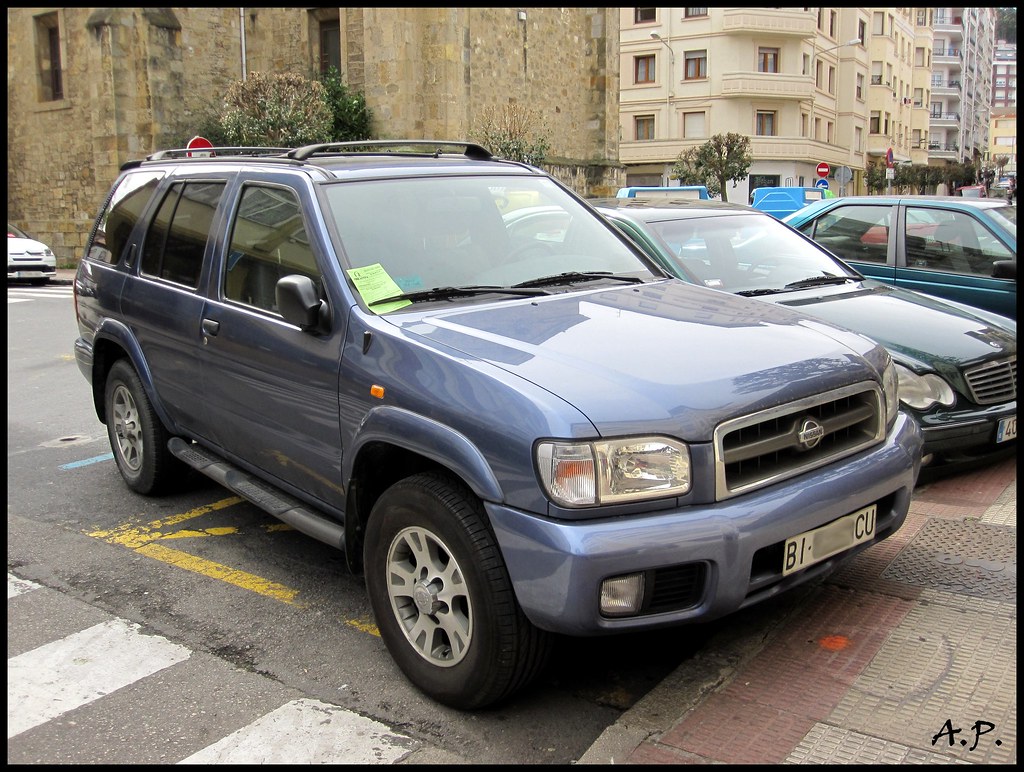
8. **Nissan Pathfinder**As a popular SUV, the Nissan Pathfinder has unfortunately garnered a reputation for problems that have left many owners with a distinct sense of buyer’s remorse. A central and frequently cited issue concerns its continuously variable transmission (CVT), a component that has been a point of contention across several Nissan models. The CVT in the Pathfinder has proven to be a significant reliability Achilles’ heel, casting a shadow over the vehicle’s otherwise appealing attributes.
Owners of the Nissan Pathfinder have frequently reported a range of frustrating issues stemming from the CVT. These include “rough shifting, shuddering, and even overheating,” which are far from minor inconveniences. Such problems can drastically impact the driving experience, making the vehicle feel unreliable and often leading to costly repairs. In the most severe cases, some owners have been faced with the unfortunate necessity to completely “replace the transmission,” an expense that few anticipate or are willing to bear.
Beyond the well-documented transmission difficulties, the Pathfinder has also seen its share of “engine issues and fuel system problems.” These additional mechanical flaws contribute significantly to the overall “frustration” experienced by owners. The combination of an unreliable transmission with other critical powertrain issues diminishes the Pathfinder’s perceived value and its ability to serve as a dependable family or adventure vehicle, particularly for those relying on it for long-term use.
For an SUV designed for versatility and reliability, these systemic problems represent a significant disappointment. The persistent nature of its mechanical issues means that despite its initial appeal and popular status, the Nissan Pathfinder has become a vehicle that many owners regret, often leaving them questioning their purchasing decision and highlighting the critical importance of powertrain integrity in vehicle selection.
Car Model Information: 2023 Nissan Pathfinder Platinum
Name: Nissan Pathfinder
Caption: 2023 Nissan Pathfinder Platinum 4WD (R53, US)
Manufacturer: Nissan
Production: 1985–present
Layout: unbulleted list
Chassis: unbulleted list
Predecessor: unbulleted list
Successor: unbulleted list
Categories: 1990s cars, 2000s cars, 2010s cars, 2020s cars, All-wheel-drive vehicles
Summary: The Nissan Pathfinder is a range of sport utility vehicles manufactured by Nissan since 1985. Until the third-generation model, the Pathfinder is based on Nissan’s compact pickup truck platform which it shares with the Navara/Frontier.
The Pathfinder was marketed as the Nissan Terrano (Japanese: 日産・テラノ, Hepburn: Nissan Terano) outside North America. Beginning in 2004, the vehicles were marketed globally as the Pathfinder.
In 2012, the R52 series Pathfinder was released as a three-row crossover SUV based on the unibody Nissan D platform, moving away from the body-on-frame chassis format. The role of a mid-size body-on-frame SUV in Nissan’s global lineup was passed to the Terra/X-Terra, which was released in 2018 and based on the D23 series Navara.
Get more information about: Nissan Pathfinder
Buying a high-performing used car >>>
Brand: Nissan Model: Pathfinder
Price: $36,777 Mileage: 46,270 mi.
Read more about: Family Car Buying Guide: The Safest 3-Row SUVs for 2025 Based on IIHS and NHTSA Data
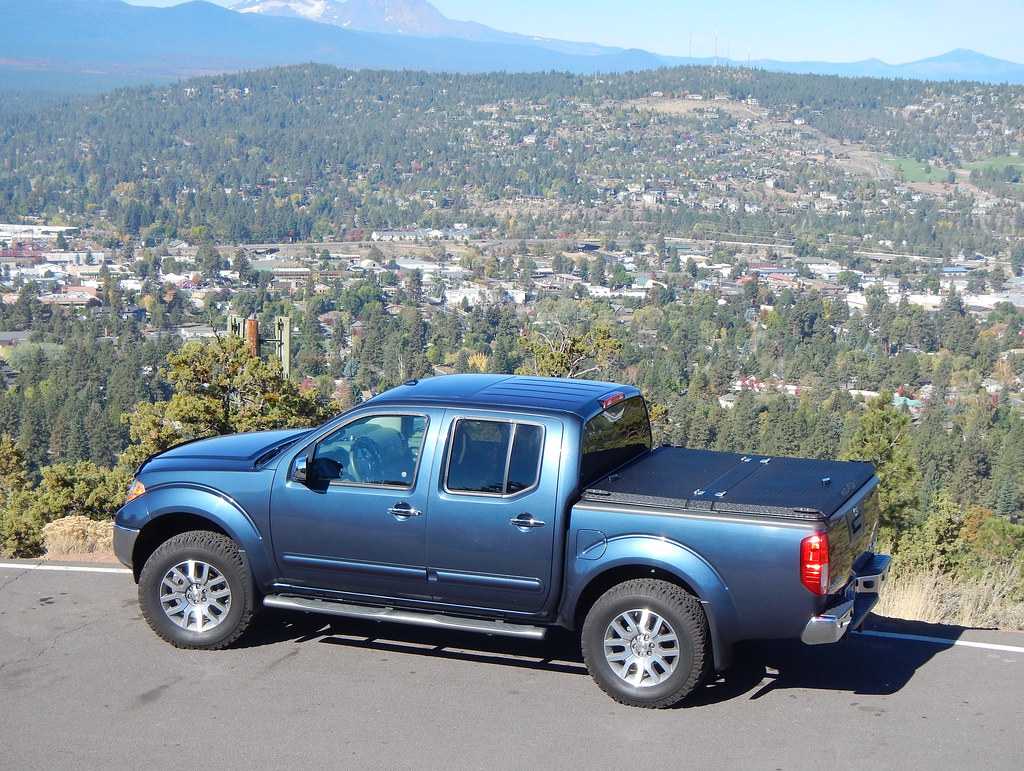
9. **Nissan Frontier**The Nissan Frontier, a mid-size pickup truck, holds a particularly notorious place among vehicles that owners wish they had never driven off the lot, especially concerning the 2005 to 2010 model years. During this period, the Frontier was plagued by design flaws that led to severe and widespread mechanical failures, turning a potentially capable work truck into a source of immense frustration and significant financial burden for its owners.
The most infamous issue affecting these specific model years of the Frontier stemmed from a critical manufacturing defect: the radiator was prone to leaking coolant directly “into the transmissions.” This design oversight created a disastrous chain reaction. Once contaminated, the transmission would experience “slipping gears, herky-jerky shifting, and transmission failure,” rendering the truck unreliable and often immobile, demanding expensive and often prohibitive repairs or complete replacement.
Further compounding the Frontier’s reliability woes during this era were recurring “engine and timing chain issues.” These problems indicated a broader lack of mechanical robustness beyond just the transmission. The combination of these powertrain failures led to frequent breakdowns, unexpected maintenance costs, and significant downtime, severely impacting the truck’s utility and the owner’s peace of mind.
Such pervasive and costly problems left owners in a state of deep dissatisfaction, frequently described as “shaking their heads and pounding the dashboard with their fists.” The Nissan Frontier from these particular model years serves as a poignant cautionary tale about the importance of researching known defects and the profound regret that can arise from unforeseen mechanical catastrophes in what should be a dependable work vehicle.
Car Model Information: 2016 Nissan Frontier SV
Categories: All set index articles, Articles with short description, Nissan vehicles, Set index articles on cars, Short description is different from Wikidata
Summary: The Nissan Frontier is a nameplate used on three different pickup truck models by Nissan:
Nissan Frontier (international), an alternative nameplate for the NP300/Navara on some markets.
Nissan Frontier (North America), a rebadged NP300/Navara from 1997 to 2021, then became a separate model since 2021.
Nissan Frontier Pro, a rebadged Dongfeng Z9 that will be available from 2025. Available as both a diesel and plug-in hybrid, with the latter being the initial variant.
Get more information about: Nissan Frontier
Buying a high-performing used car >>>
Brand: Nissan Model: Frontier
Price: $12,973 Mileage: 115,564 mi.
Read more about: Seeing Clearly: Your Essential Guide to 2025 Cars with Top Nighttime Visibility and Superior Driver Sightlines

10. **Chrysler Pacifica Hybrid**The Chrysler Pacifica Hybrid, a popular minivan, offers the appealing promise of fuel efficiency through its plug-in hybrid powertrain. However, this innovative technology has often come at the cost of reliability, as many owners have reported a litany of battery and electrical problems that have led to considerable regret, significantly offsetting its environmental and economic benefits. The complexities of hybrid systems introduced unexpected challenges that tarnished the ownership experience.
A primary source of owner dissatisfaction revolves around the minivan’s battery system. Reports of “battery drain, inconsistent all-electric range, and battery failure” are common, directly undermining the vehicle’s core appeal. These issues not only cause inconvenience by limiting the expected electric-only driving but also translate into costly repairs and a loss of confidence in the vehicle’s long-term operational stability, a crucial factor for any family vehicle.
Beyond the high-voltage battery system, the Pacifica Hybrid has also been subject to problems affecting its broader electrical architecture and even its transmission. Owners have reported various “electrical problems” that can impact a range of vehicle functions. Moreover, the “electric continuous variable transmission” (eCVT) has been cited as another point of concern, indicating that the powertrain issues are not solely confined to the battery, but extend to other critical components designed to manage hybrid power.
Despite its innovative approach to fuel economy, the cumulative effect of these reliability issues has led many Chrysler Pacifica Hybrid owners to profound regret. The constant specter of expensive battery or transmission repairs, coupled with the frustration of inconsistent performance, often outweighs the benefits of its plug-in hybrid system, making it a purchase many would reconsider given the chance to learn from others’ experiences.
Car Model Information: 2017 Chrysler Pacifica Touring-L Plus
Categories: All set index articles, Articles with short description, Chrysler vehicles, Set index articles on cars, Short description is different from Wikidata
Summary: Chrysler Pacifica is a nameplate used by Chrysler for a variety of vehicles.
The name was first used on a luxury minivan concept vehicle in 1999, and later a crossover concept in 2002.
From 2004 to 2008, it was used on a mid-size crossover, and since the 2017 model year, it has been used as the Town & Country minivan’s replacement.
Vehicles using the nameplate are:
Chrysler Pacifica concept (1999), concept minivan
Chrysler Pacifica concept (2002), concept crossover
Chrysler Pacifica (crossover) (2004–2008), production version of the 2002 concept
Chrysler Pacifica (minivan) (2017–present), Chrysler Town & Country replacement
Get more information about: Chrysler Pacifica
Buying a high-performing used car >>>
Brand: Chrysler Model: Pacifica
Price: $14,397 Mileage: 72,657 mi.
Read more about: The Ultimate Guide to Family-Friendly Cars: Top Picks & Essential Considerations for Kids and Pets in 2025
In the competitive landscape of utility vehicles, where reliability and performance are paramount, the stories of these ten models serve as invaluable lessons. While the allure of new features, attractive pricing, or a particular brand image can be strong, the experiences of past owners paint a clearer picture of long-term satisfaction. By understanding where these vehicles have fallen short, prospective buyers can make more educated choices, ensuring their next purchase is a source of pride rather than regret. Ultimately, the best investment is often one informed by a thorough assessment of real-world dependability and owner feedback, rather than merely initial impressions.



